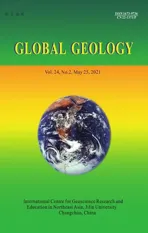Geochemical characteristics and sedimentary environment significance of carbonate rocks in Nanfen Formation of Qingbaikou System in Tonghua, Jilin Province
2021-05-26ZHANGJunshengJIAXiaoyuandGONGHui
ZHANG Junsheng, JIA Xiaoyu and GONG Hui
1. Science and Technology Park, Jilin University, Changchun 130012, China; 2. College of Earth Sciences, Jilin University, Changchun 130061, China
Abstract: In order to reveal the sedimentary environment of carbonate rocks in Nanfen Formation of Qingbaikou System in Tonghua, Jilin Province, the mineral composition and petrochemistry of carbonate rocks in Nanfen Formation were analyzed. The mineral compositions of five carbonate rock samples in Nanfen Formation mainly consist of calcite, with minor clay minerals and quartz, and the rock type is siliceous marlite. The Mn/Sr va-lues range from 1.52 to 4.08, with an average of 2.64, indicating that the carbonate rocks experienced weak diagenesis; the Sr/Ba values range from 1.26 to 2.51, with an average of 1.93, indicating marine environment; the ratio of Mg/Al ranges from 35.33 to 86.34, with an average of 62.95, indicating the seawater environment, which is consistent with the result from Sr/Ba; the MgO/CaO values range from 0.01 to 0.04, with an average of 0.02, indicating humid environment; the values of V/(V+Ni) range from 0.63 to 0.73, with an average of 0.70, indicating anoxic environment. In summary, geochemical analyses show that the Nanfen Formation carbonate rocks are marine deposits, in a warm, humid, anoxic environment with poor flow of seawater, and subsequently underwent weak diagenetic alteration.
Keywords: Nanfen Formation; carbonate rock; geochemistry; sedimentary environment
0 Introduction
The study area, Tonghua, is located in the southeast of Jilin Province. Geotectonically, in the eastern part of the northern margin of the North China Platform. A volcanic fault basin was developed in the area. The study area experienced the formation of Archean continental core, the activation and proliferation of Paleoproterozoic continental core, stable deve-lopment of Mesoproterozoic-Paleozoic platform, and the activation and transformation of Mesozoic-Cenozoic platform. It provides favorable geological condition for the formation of mineral resources in Jilin Province (Duetal., 2015; Ding, 2017).
In the eastern part of the northern margin of the North China Platform, strong fault depressions were developed in the Jiaoliao Uplift since the Qingbaikou Period. Together with the existing Longgang block, Langlin block, Laoling Uplift and Qinghe Uplift, a unique barrier type, harbor type and complex marginal sea environment was formed. During the period of the Diaoyutai Formation, the quartz sandstone in the Sanchazi-Sandaojiang area formed the nearshore sandbar. A lagoon environment was formed by nearshore sandbar and paleo-uplift, which provided a unique geographical environment for the formation of the carbonate rocks of the Nanfen Formation (Li, 1997).
The major and trace elements in the sediments are of great significance to the discrimination of sedimentary environment. The geochemical characteristics of sedimentary rocks can reflect the paleoclimate and paleoenvironment during the deposition(Chen & Hu, 2013; Huetal., 2014). Previous studies on the sedimentary environment of Nanfen Formation lack of geochemical evidence. Therefore, in this study, geochemical analysis was undertaken on the carbonate rock samples of Nanfen Formation, in order to reveal the sedimentary environment of carbonate rocks of Nanfen Formation.
1 Geological survey
Tonghua area is located in the eastern part of the North China Platform (Liuetal., 1984), it is adjacent to Kuandian, Hengren, Xinbin and Qingyuan counties of Liaoning Province in the west, Dongfeng, Panshi and Huadian in the north, and it is separated by Yalu River in the southeast from the Democratic People’s Republic of Korea (Fig.1).
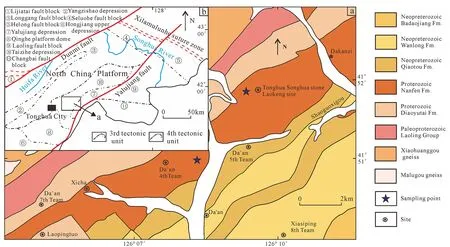
Fig.1 Geological map of the studied area
Nanfen Formation was first named in 1928 near Nanfen station, Benxi City, Liaoning Province. It is outcropped near Nanfen station, conformably overlying Diaoyutai Formation quartz sandstone and underlying the quartz sandstone of Qiaotou Formation. Nanfen Formation is composed of purple, light cyan, yellow green shale, silty shale, calcareous shale and argillaceous silty limestone. It can be obviously divided into two lithologic sections. The lower section consists of purple shale, yellow green, light cyan slate and marlstone with thin gypsum, whereas the upper section consists of purple shale with siltstone. There exist well-developed horizontal lamina (Fig.2), indicating marine sedimentary environment. The lithology of Nanfen Formation outcropped in Jilin Province are the same as those in Liaoning Province. The inner subsoil type in Jilin Province is represented by Badaojiang-qinggouzi section in Baishan City, which was mea-sured by Peng Yujing and Liu Eryi in 1983. The samples of Nanfen Formation in this study were collected from the stratigraphic sections exposed in the Da’an Fourth Team and the abandoned Tonghua Songhua stone mine site. The coordinates of sampling sites are:126°09′23.32″E, 41°51′55.25″N (NF-1, NF-2, NF-3), 126°08′32.46″E, 41°51′25.75″N (NF-4, NF-5). The rock type of Nanfen Formation sample is siliceous marl, the mineral compositions mainly consist of calcite, with a small amount of quartz and clay minerals. It is with mud grain crystal texture, massive structure or horizontal bedding (Fig. 3).
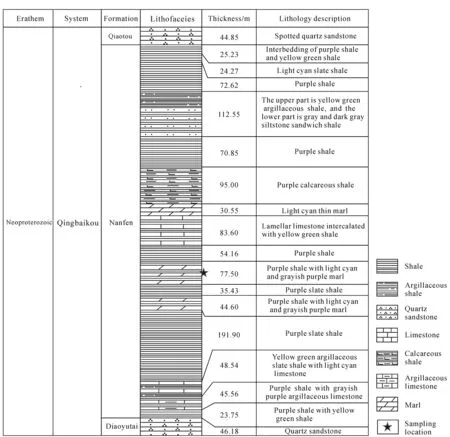
Fig.2 Lithologic histogram and sampling location of Nanfen Formation
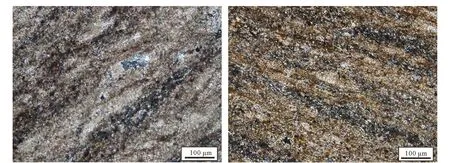
Fig.3 Micrographs of Nanfen Formation samples
2 Analysis methods
2.1 Mineral composition analysis
The mineral composition analysis of Nanfen Formation was completed in the Testing Science Experimental Center of Jilin University by using Axios Zsx Primus II X-ray fluorescence spectrometer. The test current is 60 mA and the voltage is 50 kV.
The results of mineral group analysis of sedimentary rocks in Nanfen Formation are shown in Table 1.
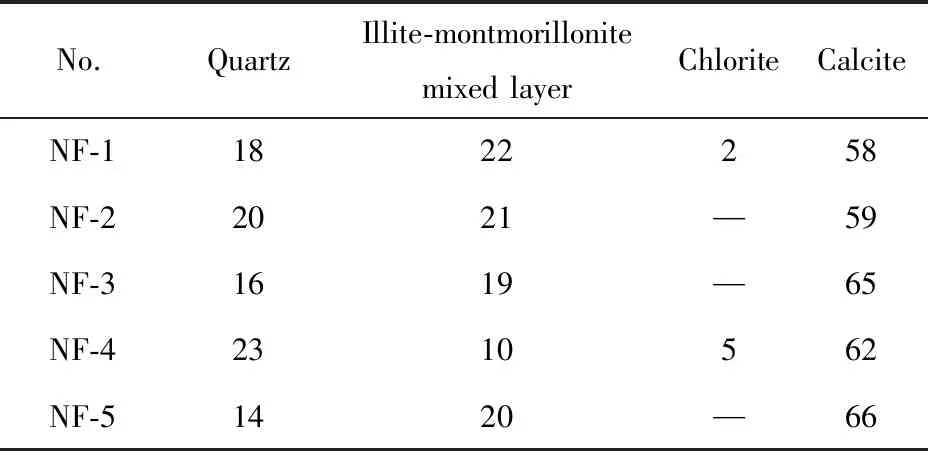
Table 1 Mineral compositions of siliceous marl samples from Nanfen Formation /%
2.2 Geochemical analysis of rocks
Geochemical analysis of major and trace elements was carried out in Aoshi Analysis and Testing Limited Company (Guangzhou). The main elements were determined by X-ray fluorescence spectrometry (XRF), and the accuracy was better than 1%. Trace element analysis was performed on the M61-MS81 mass spectrometer. For the samples with the mass fraction of trace elements greater than 10×10-6, the test accuracy is better than 5%, and for the samples with the mass fraction of trace elements less than 10×10-6, the test accuracy is better than 10%.
The results of major and trace elements analysis of sedimentary rocks in Nanfen Formation are shown in Table 2.
3 Results and discussion
3.1 Mineral compositions of carbonate rocks from Nanfen Formation
The results of X-ray diffraction analysis show that the mineral compositions of 5 carbonate samples in Nanfen Formation are mainly calcite, with a small amount of clay minerals and quartz. Among them, calcite accounts for 58%-66%, followed by illite-montmorillonite mixed layer, accounting for 10%-22%, and some quartz accounting for 14%-23% (Table 1). Some samples also have a very small amount of chlorite, and the rock type is siliceous marlite.
Under the polarizing microscope, calcite is rhombic crystal, which is a tiny granular aggregate, evenly distributed in the rock, with the particle size of 0.006-0.015 mm; quartz is fine granular or banded or unevenly distributed among calcite particles, with the particle size of 0.02-0.08 mm; illite montmorillonite mixed layer, there is a very small amount of chlorites with particle size of 0.003-0.01 mm, which are in small scale, fine granular, banded, and evenly distributed among calcite particles.
3.2 Diagenetic alteration degree of carbonate samples
The main and trace element analysis results of the samples are shown in Table 2. Marine carbonate rocks are easy to be altered during diagenesis. When diagenetic alteration is strong, the sedimentary environment characteristics of carbonate rocks cannot be obtained through the analysis of geochemical characteristics of samples and cannot effectively indicate the paleoenvironment. The degree of diagenetic alteration of marine carbonate rocks can be indicated by Mn/Sr value (Kaufman & Knoll, 1995), because Sr loss and Mn acquisition will occur in the diagenetic alteration process of marine carbonate rocks. When Mn/Sr value is less than 3.0, it indicates that it is not or only affected by weak diagenesis (Dehleretal., 2005; Guerrouéetal., 2006), The values of Mn/Sr of Nanfen Formation carbonate rocks measured in this paper are 1.52-4.08, with an average of 2.64, indicating that the carbonate rocks were affected by weak diage-nesis during the sedimentary diagenesis, which can be used to reconstruct the paleoenvironment and paleoclimate at the time of deposition.
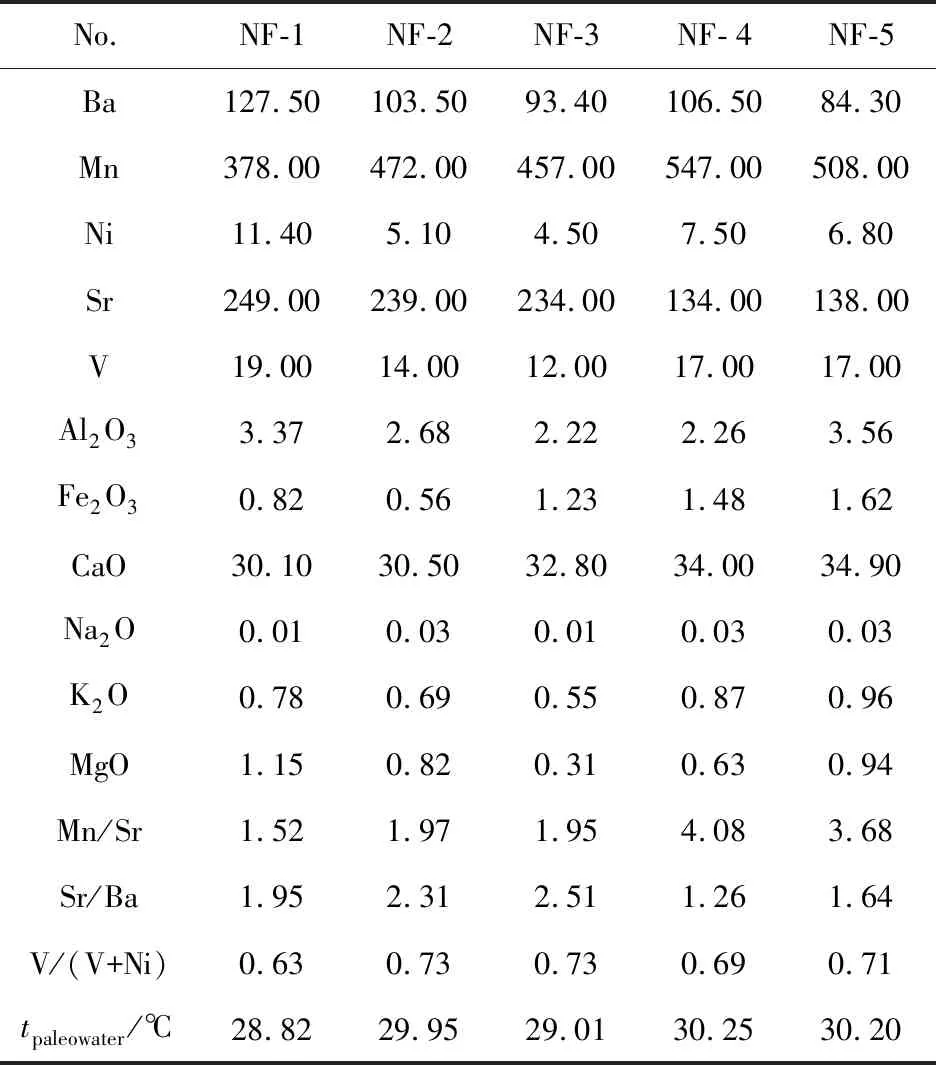
Table 2 Analysis results of major(%) and trace elements(10-6) in siliceous marl samples of Nanfen Formation
3.3 Paleosalinity
The migration ability of Sr in natural water is stronger than that of Ba. When the salinity is very low, Sr and Ba appear in the form of bicarbonate; with the increasing salinity of water body, Ba will precipitate in the form of BaSO4first, at this time, Sr is more enriched in water than Ba; when the salinity of water body reaches a certain degree, Sr will precipitate in the form of SrSO4gradually. Therefore, the value of Sr/Ba in rock samples is closely related to the paleosalinity, and can be used as an indicator of pa-leosalinity (Hatch & Leventhal, 1992). When Sr/Ba is less than 1, it is freshwater deposit; when Sr/Ba is more than 1, it is marine deposit (Xiong & Xiao, 2011). The Sr/Ba values of Nanfen Formation samples are 1.26-2.51, with an average of 1.93, indicating that the study area is a marine sedimentary environment. According to the seaworthiness of MgO and land affinity of Al2O3in sedimentary rocks, the ratiom=100×n(MgO)/n(Al2O3) (Jingetal., 2005; Yangetal., 2009), and themvalues of Nanfen Formation are 35.33-86.34, with an average of 62.95, indicating marine sedimentary environment, which is in good agreement with Sr/Ba values.
3.4 Paleotemperature and paleoclimate
According to the empirical formula of Sr content (Y) and paleotemperature (t/℃) summarized by predecessors,Y=2578-80.8tpaleowater(Lietal., 2001), the results of Sr content andtpaleowaterof Nanfen Formation carbonate rocks are shown in Table 2. The paleowater temperature of Nanfen Formation is 28.82℃-30.25℃, and the average temperature is 29.45℃, indicating warm water environment.
When soluble salts such as sodium salt and potassium salt do not participate in precipitation, high MgO/CaO value indicates dry hot climate, and low MgO/CaO value indicates humid climate (Heetal., 2004; Wang & Luo, 2009). The MgO/CaO values of Nanfen Formation are 0.01-0.04, with an average of 0.02, indicating humid environment.
3.5 Paleoredox environment
When V/(V+Ni) is greater than 0.6, it is anoxic environment; when V/(V+Ni) is less than 0.46, it is oxygen enriched environment; when V/(V+Ni) is between 0.46 and 0.60, it is oxygen- poor environment (Hatch & Leventhal, 1992). The V/(V+Ni) values of Nanfen Formation carbonate rocks are 0.63-0.73, with an average of 0.70, indicating that Nanfen Formation carbonate rocks were deposited in anoxic environment, which is related to the poor flow of seawater.
4 Conclusions
(1) The Sr/Ba values of Nanfen Formation samples are in good agreement withm=100×n(MgO)/n(Al2O3), indicating that Nanfen Formation carbonate rocks were formed in marine environment.
(2) The average Mn/Sr value of Nanfen Formation samples is 2.64, less than 3.0, which indicates that the carbonate rocks of Nanfen Formation suffered weak diagenetic alteration thus preserved the information of seawater at the time of deposition.
(3) Through the analysis of major and trace elements, it is concluded that the Nanfen Formation carbonate rocks were formed in a warm and humid environment.
(4) Trace element analysis shows that the carbonate rocks of Nanfen Formation were deposited in anoxic environment with poor seawater flow.
杂志排行
Global Geology的其它文章
- Chemical indexes of Paleoproterozoic sedimentary rocks from Liaohe Group, North China Craton: Implications for paleoclimate and provenance
- Origin of ore-forming fluids in Qinggouzi stibnite deposit,NE China: Constraints from fluid inclusions and H-O-S isotopes
- Evolution characteristics of hydrological connectivity pattern of marsh wetland in Naoli River Basin
- Common offset ground penetrating radar data inversion based on ray theory
- Influence of fracture width on borehole radar response
- Application of Gaussian beam pre-stack depth migration in rugged seabed
